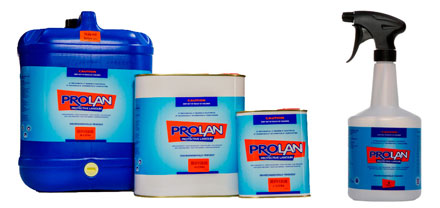
For the preservation of stainless steel, Anzor strongly recommends regular maintenance. The following provides a guide to preserving stainless.
Please be aware of this yourself and also pass it to your clients. If you have any questions or would like further information, please contact us.
Like all surfaces, stainless steel requires cleaning to remove dirt and grime to keep it in pristine condition. The level of cleaning and maintenance required depends primarily on the environment. In some exterior instances normal rain washing is sufficient, e.g. roofing, but more polluted or corrosive environments, e.g. coastal situations, the surfaces require regular washing to retain their good looks.
The type of finish will also influence the cleaning required and it is recommended that the rougher the surface the more regularly cleaning is required. For example, stainless steel wire has a rough surface with crevices that harbour corrosive agents which cause disclolouration relatively quickly. Regular cleaning is required to remove this. A corrosion inhibitor such as Prolan Liquid or aerosol applied with a soft cloth will aid in corrosion prevention.
Dirt and grease accumulate from many sources. They can usually be removed by routine cleaning using soap, ammonia or detergent and fresh warm water. It should be noted that nearly all abrasive cleaners will scratch bright polished stainless steel surfaces. On other finishes the cleaners should only be used in the direction of the polish.
A clean, dust and grit free cloth should be used to avoid scratching. In all cases the mildest cleaning procedure that will do the job efficiently should be used, e.g. wash down with warm fresh water and washing up liquid followed by a wash of clean warm water only followed by wiping dry with a clean absorbent cloth.
For textured and rigidized finishes a nylon bristled brush will remove any dirt and grime which may accumulate in the valleys of the textured finish. If "tea staining" or rust is present, stainless steel can be cleaned with Grunt.
After initial installation, the stainless steel will required thorough cleaning to remove any adhesive - either from the protective coating or other building operations - that may have been left on the surface. If marks such as fingerprints etc. a continuous problem a light surface coating of baby oil, clear silicone wax polish or furniture polish such as Neopol will help prevent recurrence of this problem. Care should be taken on choosing such a product to be used on the surface of stainless steel if clothing is likely to come into contact with the surface.
Discolouration or tea staining most commonly occurs within 5 kilometers of the coast and becomes progressively worse closer to the water. Note that in situations right on the seafront, it is recommended that cleaning is performed once a month.

Harsh abrasives should never be used on any polished metal surface.
Strong mineral acids such as hydrochloric and sometimes hydrofluoric acid are used to clean masonry, but these should never be permitted to come in contact with stainless steel or any other metal work. If this should happen, the acid solution should be washed off immediately with plenty of water.
Pads of ordinary steel wool incorporating soap should be avoided - there is a danger that particles of plain carbon steel from the pads may be left behind after rinsing to give unsightly rust stains.
Never use oil based commercial cleaners on the outside of a building. The residual oil film can result in unwanted iridescent colours on stainless steel which can only be removed by abrasive action.
Most stainless steel installed at a construction site has a PVC protection film on it. This should remain on the steel until the last possible moment to protect the surface of the stainless steel from such problems as chemical and concrete splatters.
Stainless steel wire can be prone to corrosion and tea staining. This is partly due to the long crevices which run up it. These tend to trap salt and other contaminants, and also can remain wet for longer. This damages the chromium oxide layer of the stainless steel, causing rust or 'tea staining'.
To maintain the wire's looks, it must be cleaned regularly (see cleaning frequency guidelines). The wires should be cleaned with a soft cloth using soap or mild detergent and warm water, followed by rinsing with cold water and wiping the surface dry.
Do not use hydrochloric acids as these will stain the surface and may start serious corrosion. To remove stains try Grunt.
Anzor Pressfit System: Press. Fit. Done.
Build without delays with Anzor Quick Drill Screws for timber construction.
Anzor Welcomes Prime Minister Christopher Luxon to East Tamaki Branch
Flexi-Mesh: The go-to product of choice for stainless steel mesh solutions
To receive useful info and product updates add your details below